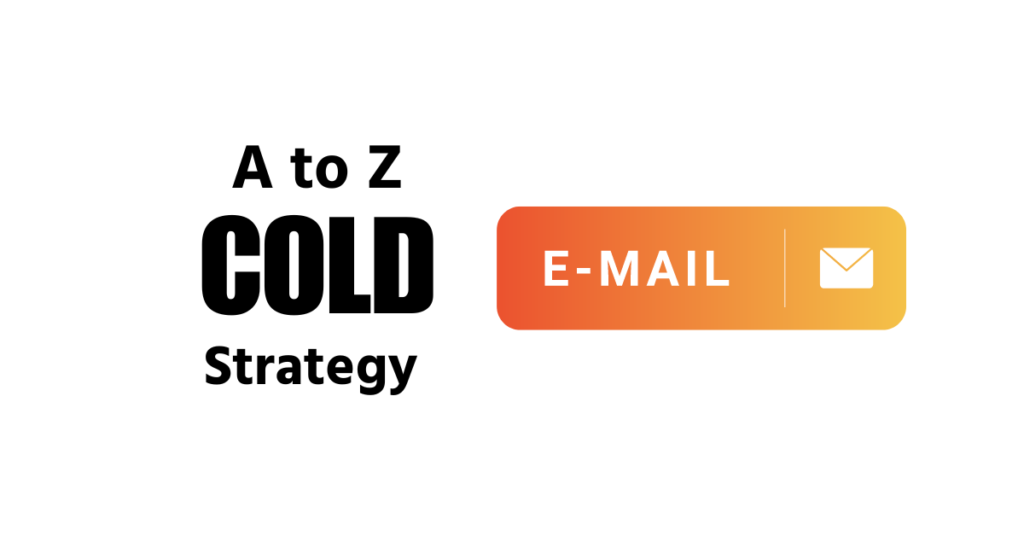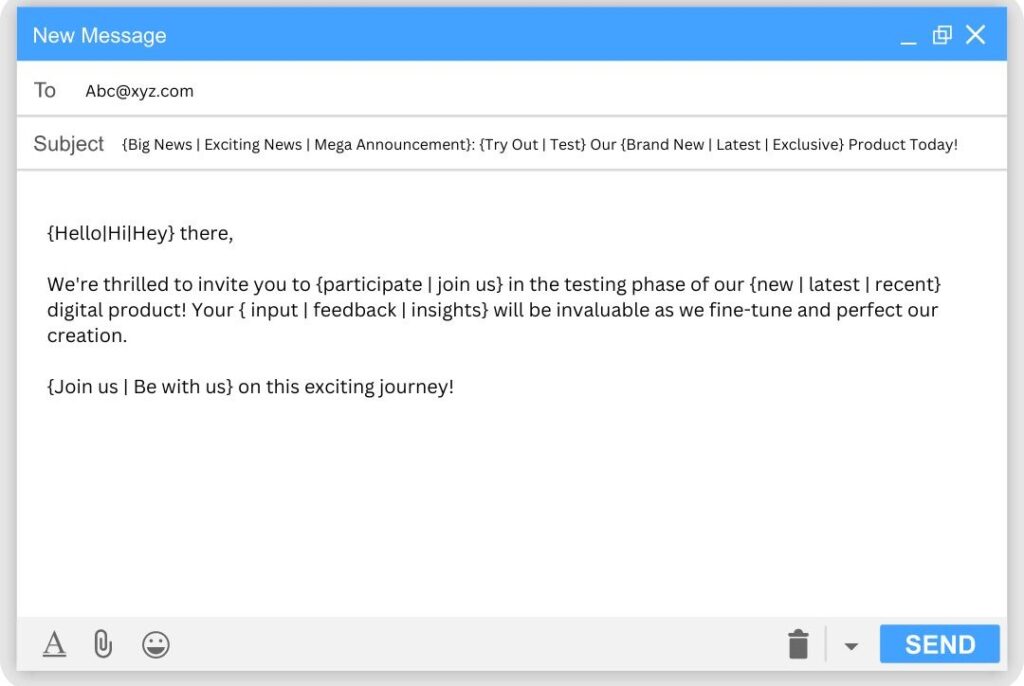If you’re Googling “How many cold emails does it take to get a client?”…
You’re probably either burned out, second-guessing yourself, or on your 89th email with nothing to show for it.
Here’s the truth: There’s no magic number. However, there are still some percentages that people find after analyzing a cold email strategy. For example,
On average, it takes around 2,000 cold emails to secure one client, based on industry benchmarks. That number is based on a typical 1–5% reply rate, followed by a 5% conversion rate from replies to paying clients.

Some people close deals in 20 emails. Others blast out 500 and hear crickets. But the real issue? It’s not just about the number of emails you send. It’s about the math behind the entire cold email funnel. If you’re not converting, chances are:
- You’re targeting the wrong people
- Your offer’s unclear
- Or your emails are getting ignored (or worse, filtered)
To address all of these, here is what I do to increase How many cold emails to get a response.
The Real Math: Cold Email Conversion Rates
If you’re serious about getting clients through cold email, you need to understand the math. I’m not talking about guesswork. I mean the actual numbers behind what it takes to go from inbox to invoice.
Most people think, “Just send a bunch of emails and hope for the best.”
That’s exactly why most cold email campaigns fail.
Let’s break it down properly based on real-world performance, not theory.
What Happens Between “Send” and “Signed”
Cold email isn’t just about getting replies. It’s a full funnel.
Here’s what it usually looks like:
- Someone opens your email
- They actually reply
- You book a call or meeting
- You close the deal
At every stage, there’s a drop-off. But if you know your numbers, you can figure out exactly how many emails you need — or better yet, which part of your process needs fixing.

Typical Numbers (from campaigns I’ve run and benchmarked)
| Stage | What You Can Expect |
|---|---|
| Open Rate | 40% – 60% (if your subject line doesn’t suck) |
| Reply Rate (from opens) | 8% – 10% (with decent targeting) |
| Booked Calls (from replies) | 10% – 30% (if your offer’s clear) |
| Close Rate (from calls) | 10% – 20% (if you qualify well) |
Let’s put that into perspective: You send 1,000 cold emails-
500 people open
40–50 reply
5–15 book a call
You close maybe 1 or 2 clients
Yep. That’s where the “2,000 emails per client” average comes from. But if your targeting and messaging are on point, you can cut that number in half or better.
The Cold Email Formula I Use
When I plan a campaign, this is the formula I run:
Clients = Emails × Open Rate × Reply Rate × Booking Rate × Close Rate
Plug in your actual data; only then can you develop a genuine email strategy. If you don’t have any yet, start with the conservative end of the ranges above. Then work backwards. That tells you how many emails you really need to hit your revenue goal.
So, How Many Cold Emails To Get One Client?
On average, you’ll need to send 100–150 cold emails to close one client. If your targeting and messaging are decent. Here’s a quick funnel breakdown:
- Open rate: 40–60%
- Reply rate: 8–10%
- Positive replies: ~30% of replies
- Meetings booked: ~60% of positive replies
- Close rate: ~50% of meetings
That math adds up to roughly 1 client per 100 emails — with a good process.
But if your emails are generic or untargeted, it might take 300+ emails to see any results.
TL;DR: Great targeting and personalization shrink the number. Spray-and-pray inflates it.
B2B Cold Cmail Response Rates
Most B2B cold email response rates range from 1% to 10%. In my experience in b2b cold emailing, 7% is a solid benchmark. But that number can swing hard depending on how well you’ve nailed your targeting and personalization. I’ve seen some industries break past 10% easily, while others barely crack 3% because they’re blasting generic messages to the wrong audience.

What’s clear is this,
Email still dominates. About 77% of B2B buyers prefer it over any other channel, and 59% of companies say it’s their most reliable source of leads. No surprise there cold email works when it’s done right.
How To Increase Cold Email Sales Conversion Rates
It also happens to be one of the highest-return-on-investment (ROI) prospecting methods available. Around 72% of businesses say email prospecting delivers “good to excellent” ROI. That’s huge, especially when you realize it takes roughly 306 cold emails, on average, to generate one qualified lead. With typical open rates around 36% and reply rates at 7%, that math checks out.
The journey towards closing a sale has several aspects and influences. There are multiple dimensions to consider when it comes to cold email lead conversion. Let us explore some of those mail metrics below

Step 1: Tighten Your Targeting
The best cold emails I’ve sent had one thing in common. They went to the right person. Before you even think about copy, audit your list. Get laser-specific with job titles, industries, company size, and pain points. I’ve scrapped entire campaigns simply because the list was too broad. The sharper the list, the fewer emails you need to close.
Step 2: Open With Relevance, Not Fluff
Most intros are ignored because they’re full of generic filler. What’s worked for me: opening with something actually relevant—like mentioning a specific project they led, a product feature I liked, or a recent company update. It doesn’t need to be deep research, but even light personalization at scale beats bland intros every time.
Step 3: Simplify Your Value Prop
Here’s the rule I follow: If I can’t explain the benefit in one sentence, I’m not ready to hit send. Avoid talking about what your product is—focus on what it does. I’ve seen replies double when I switched from feature lists to outcome-based lines like, “We help B2B sales teams book 30% more demos without hiring more SDRs.”
Step 4: Test Subject Lines Aggressively
I used to write clever subject lines—until I realized clarity outperforms creativity almost every time. Subject lines that hint at a clear benefit, ask a direct question, or name-drop the prospect’s company have consistently outperformed the rest. I A/B test every campaign. Sometimes just changing two words lifts open rates by 10–15%.
Step 5: Build a Follow-Up Sequence That Feels Natural
One email won’t cut it. Some of my highest-converting sequences had the first reply come on touch four or five. What worked: keeping follow-ups short, changing the angle each time (new benefit, case study, or question), and spacing them over 10–14 days. It’s not about pestering—it’s about staying relevant.
Step 6: Track the Right Metrics and Adjust
I don’t just look at open and reply rates. I track positive responses, booked meetings, and client conversion timelines. If something’s off, I isolate one element at a time: subject, intro, CTA, or timing. One of my best-performing campaigns came after I swapped a weak CTA for a softer ask like “Worth a quick chat next week?”
Case Studies: Real Examples of Cold Email Math
If you are new, then it’s a patient game for you. But what I can do is motivate you with some of my case studies,
Case 1: Closed 3 B2B Clients from 200 Emails
This was a campaign I ran for a niche SaaS founder targeting e-commerce brands. Instead of going broad, I curated a clean list of 200 hand-picked leads, all mid-market DTC brands doing at least $2M in revenue. Every email was personalized just enough to show we weren’t spamming, but still scalable.
Here’s how it broke down:
- 200 emails sent
- 61% open rate (strong subject line + clean domain)
- 18 replies
- 9 positive responses
- 6 calls booked
- 3 clients closed
- 1.5% conversion from cold to closed
What made the difference? A tight ICP, a crystal-clear value prop (“increase checkout conversion by 11% in under 30 days”), and a CTA that felt low-friction—no “let’s jump on a 30-min call,” just “worth exploring?”
Case 2: Landed a Copywriting Client with Just 100 Emails
This one was personal—I ran a campaign to book new freelance copywriting clients in the SaaS space. I targeted seed and Series A founders, kept the emails short, and led with proof (“helped another B2B SaaS boost demo bookings by 26% in 2 weeks”).
Stats looked like this:
- 100 emails sent
- 47% open rate
- 10 replies
- 3 positive leads
- 2 calls booked
- 1 client closed
- 1% cold-to-client conversion
I didn’t pitch services. I simply asked if they were open to feedback on their homepage copy. That framing lowered resistance and opened up real conversations. From there, the project closed in less than two weeks.
Cold email works when it’s done with intent. If you’re just blasting templates, don’t expect results like this. But if you’re willing to put in the upfront work building the right list, refining the message, testing the angles. It compounds fast.
FAQs About Cold Emails
How many cold emails should I send to one person?
Starting out with cold emails? It’s a good idea to keep things manageable at first. If you’re new to the game, aim for sending about 10-20 emails per day. Once you get the hang of it and start automating your campaigns, you can gradually increase that number. The key is to scale up as you gain more experience and confidence.
How many cold emails are too many?
When you’re just getting started, it’s wise to stick to sending between 10 to 20 cold emails a day. If you’re eager to ramp up your campaign, make sure to do it gradually. You can use tools to help you send out emails in bulk, but remember to spread them out throughout the day to avoid overwhelming your prospects
How often should you follow up on cold emails?
When it comes to following up, the sweet spot is between 4 to 9 follow-up emails. This range helps maximize your reply rates without coming off as spammy. A good strategy is to leave at least a 2-day gap after your first follow-up, then space out the next few emails with 4-day intervals, eventually moving to 5+ days between contacts.
How long should you wait between cold emails?
Timing is everything! You don’t want to follow up too soon after your initial email, but you also don’t want to wait too long. A good rule of thumb is to wait between 3 to 7 days before sending your first follow-up. After that, you can follow up every few days to a week, depending on how urgent the situation is. Finding the right balance is key to keeping your prospect engaged without overwhelming them
Final Thoughts
Sending cold emails without a clear objective won’t yield any results. That is why you must warm up your email first and then begin working on campaign execution.
The content matter of your email outreach strategy should have a customer-centric intent. Otherwise, it would be tough for you to differentiate between hot leads and regular leads. Lastly, you shouldn’t be stuck to any specific number and wait for conversion. The approach should be to convert leads as early as possible.


